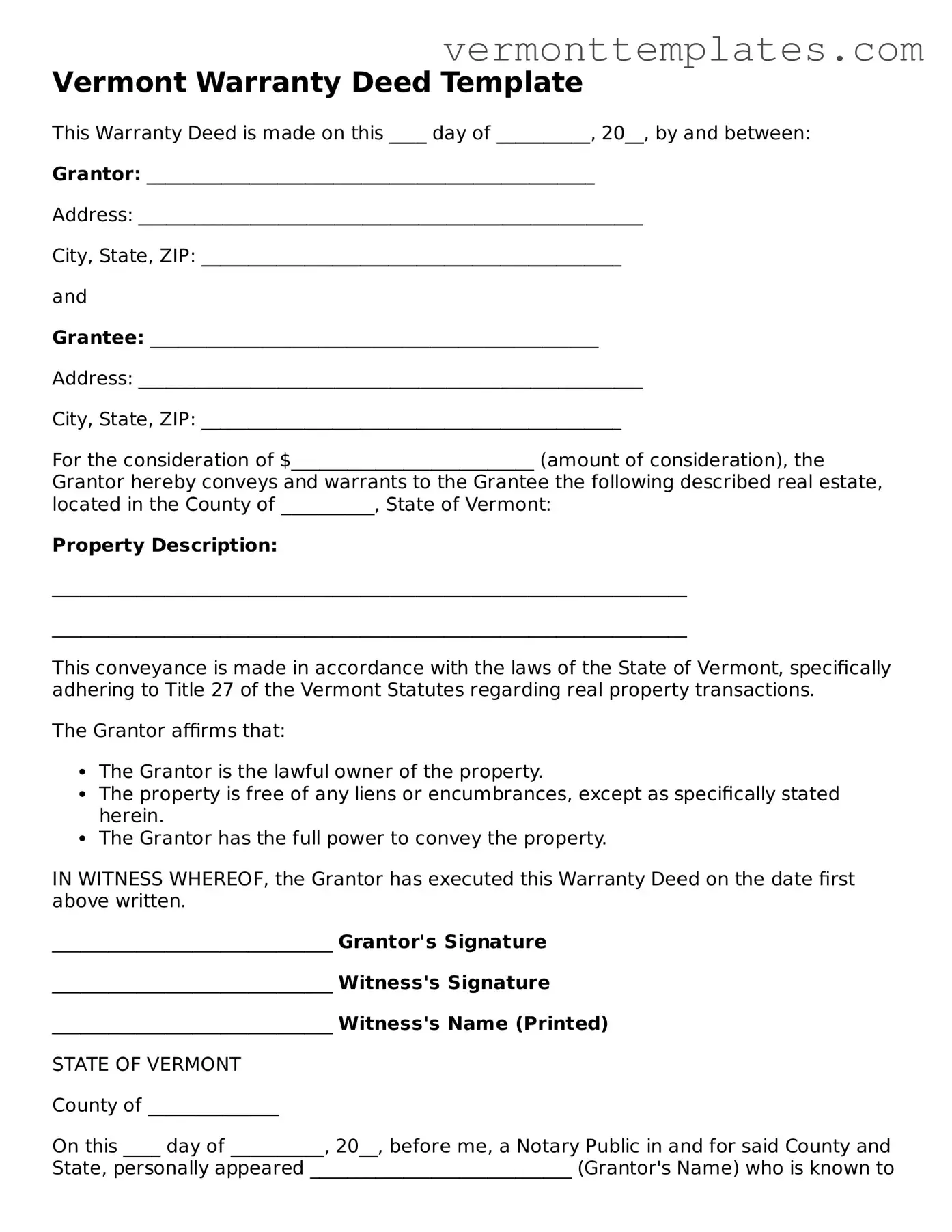Vermont Warranty Deed Template
This Warranty Deed is made on this ____ day of __________, 20__, by and between:
Grantor: ________________________________________________
Address: ______________________________________________________
City, State, ZIP: _____________________________________________
and
Grantee: ________________________________________________
Address: ______________________________________________________
City, State, ZIP: _____________________________________________
For the consideration of $__________________________ (amount of consideration), the Grantor hereby conveys and warrants to the Grantee the following described real estate, located in the County of __________, State of Vermont:
Property Description:
____________________________________________________________________
____________________________________________________________________
This conveyance is made in accordance with the laws of the State of Vermont, specifically adhering to Title 27 of the Vermont Statutes regarding real property transactions.
The Grantor affirms that:
- The Grantor is the lawful owner of the property.
- The property is free of any liens or encumbrances, except as specifically stated herein.
- The Grantor has the full power to convey the property.
IN WITNESS WHEREOF, the Grantor has executed this Warranty Deed on the date first above written.
______________________________ Grantor's Signature
______________________________ Witness's Signature
______________________________ Witness's Name (Printed)
STATE OF VERMONT
County of ______________
On this ____ day of __________, 20__, before me, a Notary Public in and for said County and State, personally appeared ____________________________ (Grantor's Name) who is known to me (or satisfactorily proven) to be the person whose name is subscribed to the within instrument and acknowledged that he/she executed the same for the purposes therein contained.
In witness whereof, I hereunto set my hand and official seal.
______________________________ Notary Public Signature
My Commission Expires: _______________
